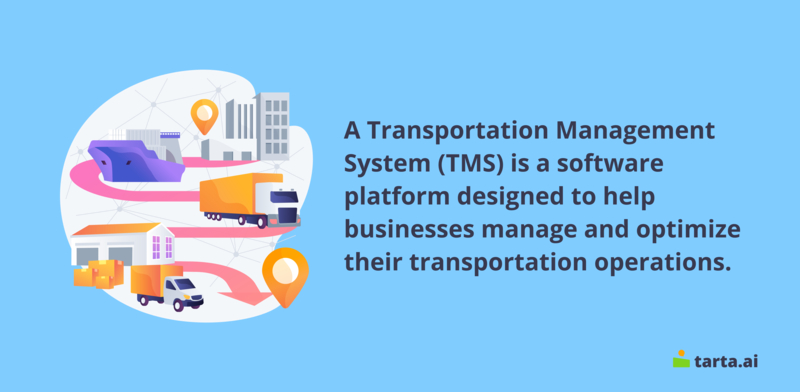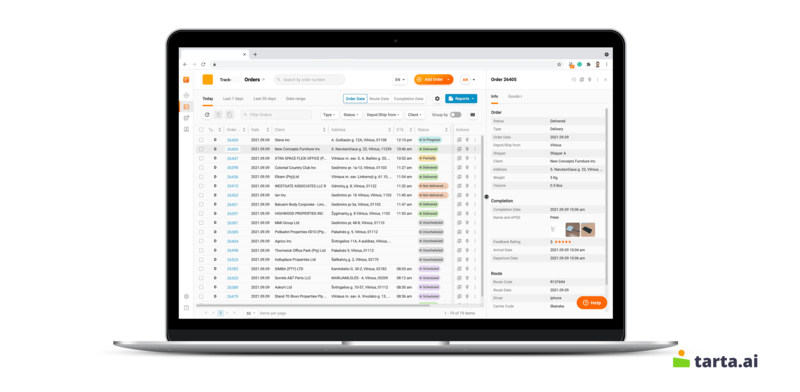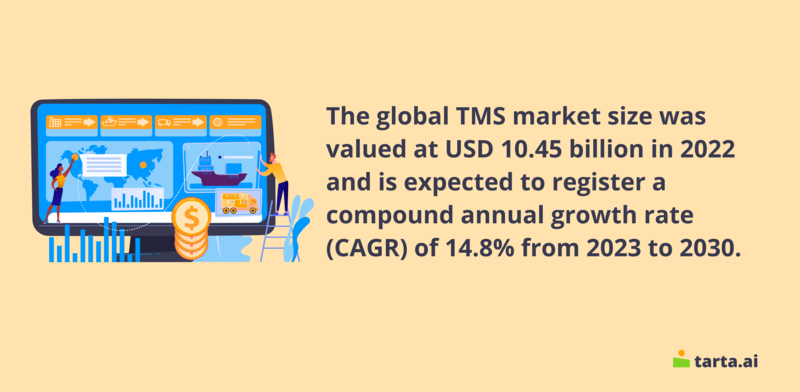Unlocking Efficiency and Cost Savings with Transportation Management Systems

Transportation Management Systems (TMS) is a software platform that helps businesses manage their transportation operations efficiently. TMS automates and streamlines transportation processes from start to finish, from planning and execution to tracking and analysis. TMS integrates with a company's supply chain management system to help manage inbound and outbound transportation activities.
These systems are used by a wide range of businesses, including manufacturers, distributors, retailers, and logistics providers. In this article, we will provide an overview of transportation management systems, their features and benefits, and their future.
Functions of Transportation Management Systems (TMS)
Transportation Management Systems (TMS) offer several key functions to help businesses manage their transportation operations more efficiently. Here are some of the key functions of TMS:
- Carrier selection: TMS allows businesses to choose the best carriers for their shipments based on criteria such as price, service level, and transit time.
- Route optimization: TMS helps businesses optimize their transportation routes to minimize costs and improve efficiency. The system takes into account factors such as distance, traffic patterns, and delivery windows to determine the most optimal route.
- Shipment tracking: TMS provides real-time visibility into the status of shipments, allowing businesses to track their goods throughout the transportation process.
- Freight payment and audit: TMS helps businesses manage freight payments and audits by automating the process of invoice matching, payment processing, and dispute resolution.
- Analytics and reporting: TMS provides businesses with the ability to analyze transportation data and generate reports on key performance metrics such as on-time delivery, carrier performance, and transportation costs.
Note: TMS can integrate with other systems such as warehouse management systems (WMS) and enterprise resource planning (ERP) systems to streamline logistics operations
How a typical TMS system works
- Planning: The TMS system allows users to create and optimize shipments, select the most efficient carriers, and determine the best routes to take.
- Execution: Once shipments are planned, the TMS system helps to execute the plan by generating bills of lading, tracking shipments, and managing exceptions.
- Visibility: The TMS system provides real-time visibility into the status of shipments, allowing users to track freight movements from origin to destination.
- Analytics: The TMS system provides data analytics capabilities, allowing users to analyze carrier performance, identify trends, and make data-driven decisions.

Benefits of Transportation Management Systems (TMS)
Benefit | Description |
Improved efficiency | TMS streamlines transportation operations, reducing the time and resources required to manage shipments. |
Reduced costs | TMS optimizes transportation routes and carrier selection, resulting in lower transportation costs. |
Enhanced customer service | TMS provides real-time visibility into the status of shipments, allowing businesses to proactively communicate with customers about delivery times and any potential delays. |
Increased visibility | TMS provides real-time visibility into transportation operations, allowing businesses to make informed decisions and quickly respond to any issues that arise. |
Better decision-making | TMS provides analytics and reporting capabilities, allowing businesses to make data-driven decisions about transportation operations. |

Who uses Transportation Management Systems (TMS)
Transportation Management Systems (TMS) are used by a wide range of businesses across various industries. Any business that manages transportation operations can benefit from using a TMS, including:
- Manufacturers: Manufacturers use TMS solutions to manage their inbound and outbound shipments, track inventory, and optimize transportation routes.
- Distributors: Distributors use TMS solutions to manage their transportation operations, including carrier selection, shipment tracking, and freight payment and audit.
- Retailers: Retailers use TMS solutions to manage their transportation operations, including vendor compliance, store delivery, and customer delivery.
- Logistics providers: Logistics providers use TMS solutions to manage their transportation operations, including carrier selection, shipment tracking, and freight payment and audit.
Looking towards the future
TMS is likely to continue to evolve and become even more sophisticated. Advancements in technology, such as the Internet of Things (IoT) and artificial intelligence (AI), are likely to play a significant role in the development of TMS. For example, IoT sensors can be used to provide real-time data on shipment location and condition, while AI can be used to analyze this data and optimize transportation routes in real-time.
Other future developments in TMS could include increased use of blockchain technology for secure data sharing and tracking, as well as the incorporation of machine learning algorithms to improve decision-making and automate certain transportation processes. Additionally, TMS may become more integrated with other supply chain management systems, such as warehouse management systems and order management systems, to provide a more holistic view of the entire supply chain. Overall, the future of TMS is likely to involve even greater automation, optimization, and data-driven decision-making, leading to increased efficiency and cost savings for businesses that use these systems.
- Transportation Management Systems (TMS) is a software platform that helps businesses manage their transportation operations efficiently.
- TMS automates and streamlines transportation processes from planning and execution to tracking and analysis.
- TMS integrates with a company's supply chain management system to help manage inbound and outbound transportation activities.
- TMS offers several features such as carrier selection, route optimization, shipment tracking, freight payment and audit, and analytics and reporting.
- TMS benefits businesses by improving efficiency, reducing costs, enhancing customer service, increasing visibility, and enabling better decision-making.
- TMS is used by a wide range of businesses, including manufacturers, distributors, retailers, and logistics providers.
- The future of TMS is likely to involve even greater automation, optimization, and data-driven decision-making, leading to increased efficiency and cost savings for businesses.
FAQ
How is data used in a TMS?
A TMS optimizes transportation operations by collecting and analyzing data from various sources, enabling informed decisions about carrier selection, routing, and scheduling.
How can a TMS help my business save money?
By optimizing your transportation operations, you can reduce fuel costs, minimize empty miles, and eliminate unnecessary stops. A TMS can also help you negotiate better rates with carriers and avoid expensive penalties for late shipments or delivery failures.
Can a TMS integrate with my existing systems?
Yes, most TMS solutions are designed to integrate with other business systems, such as ERP, WMS, and CRM.
Can a TMS help me comply with regulations?
Yes, many TMS solutions are designed to help businesses comply with transportation regulations, such as hours-of-service rules, electronic logging device (ELD) requirements, and hazardous materials regulations.
How long does it take to implement a TMS?
Most TMS implementations can be completed within a few months. The implementation process typically involves data integration, system configuration, and user training.